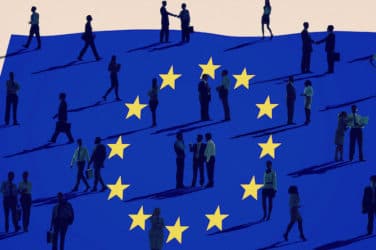
Low interest rates across Europe continue to leave many investors in a quandary.
The choice, if that is the right term for it, seems to be either to stick with investing in seemingly ‘risk-free’ sovereign debt or head towards more risky assets such as dividend-paying stocks to try and garner some yield.
However, if and when interest rates do eventually rise, these low-yield fixed income investments will start to see their values fall. And if inflation begins to pick up too then these bonds will see their real yields become even less attractive.
“The low interest rate environment is stifling,” Paul MacGregor, executive director, head of fixed income at NYSE Liffe in London, the global derivatives business of NYSE Euronext, told Markets Media.
The policy over the last few years by the region’s central banks has been to hold interest rates at record lows in a bid to free countries from the shackles of the 2008 financial crisis and current euro zone debt troubles. The UK has kept rates at 0.5% for three years, while the European Central Bank currently has the euro zone interest rate at 1%. Some market participants believe this is a deliberate policy to push investors back into equities.
While equities look cheap at present, relative to other asset classes, governments in Europe must first restore investors’ faith in their ability to contain the euro zone crisis and stimulate sustained economic growth for people to pile back into the asset class. Many institutional investors have held tight from returning to equities and continue to wait for the right moment to re-invest.
“The markets are stuck right now because when there is nothing else to trade you seem to put your money into cash equities and I think that’s a deliberate policy by central banks,” one London-based market source told Markets Media.
“With rates held rates at near zero, there is not so much value by having money on deposit and you are really forced by your investors to go long equities—which is the only thing to do which becomes a self-fulfilling prophecy.
“That’s part of the reason for the low rates policy. It’s to drive people to put more funds into equities. It is a way of trying to inject a recovery so a lot of the firms can therefore raise more capital and invest more and hopefully you get this virtuous circle. The worry is that it is happening very slowly.”
However, MacGregor at NYSE Liffe says it is not all doom and gloom as investors go in search of returns. NYSE Liffe’s short-term interest rate futures contracts are gaining traction in the market place, which allow users to gain exposure to longer term interest rates.
“We are seeing some positive developments in our packs and bundles market place for both euribor and sterling futures,” he said. “Both of these continue to grow against trend so whilst the main products have seen a decline in liquidity, particularly at the front part of the curve, the pack and bundle markets continue to grow.”





